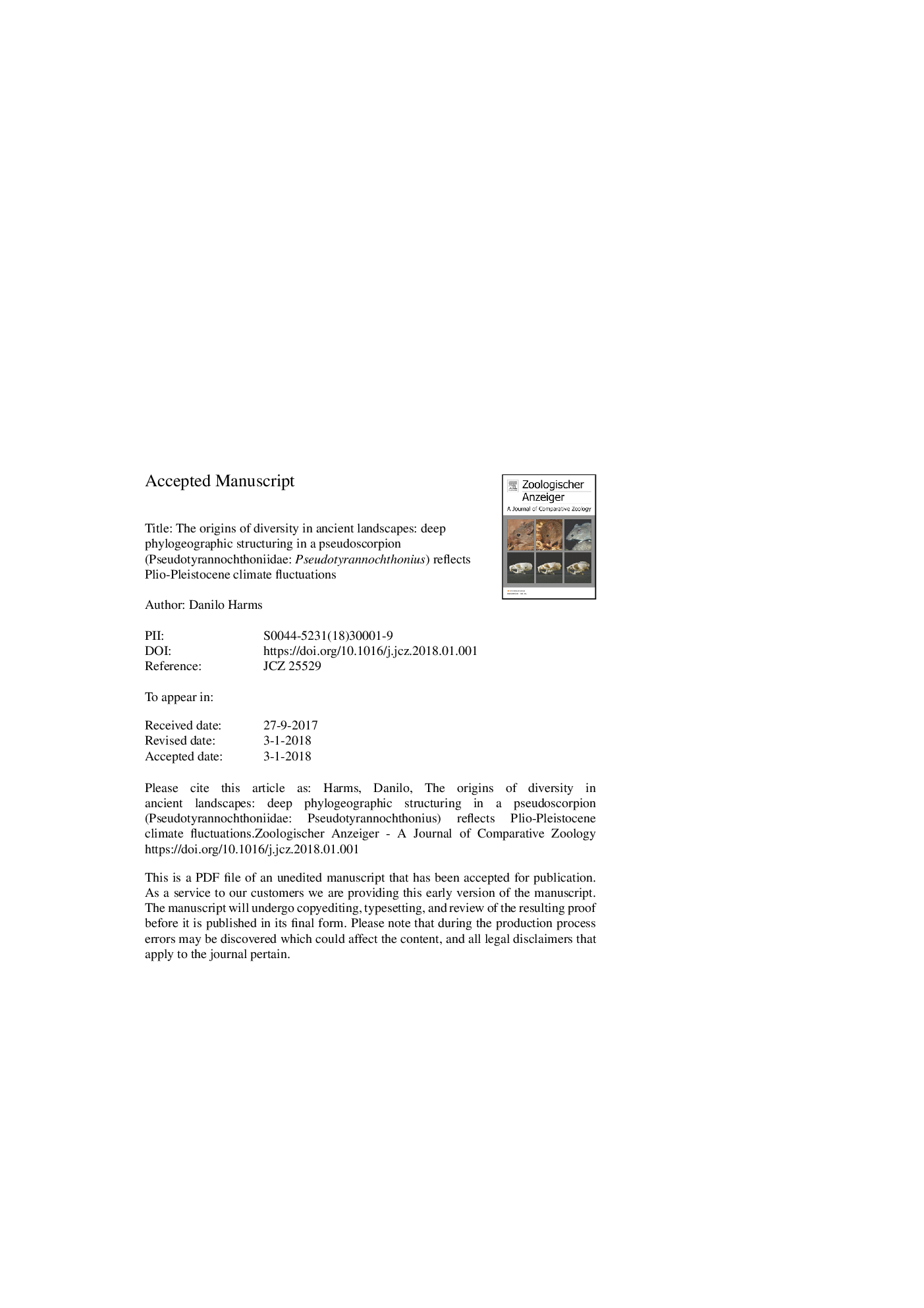| کد مقاله | کد نشریه | سال انتشار | مقاله انگلیسی | نسخه تمام متن |
|---|---|---|---|---|
| 8626788 | 1568602 | 2018 | 36 صفحه PDF | دانلود رایگان |
عنوان انگلیسی مقاله ISI
The origins of diversity in ancient landscapes: Deep phylogeographic structuring in a pseudoscorpion (Pseudotyrannochthoniidae: Pseudotyrannochthonius) reflects Plio-Pleistocene climate fluctuations
دانلود مقاله + سفارش ترجمه
دانلود مقاله ISI انگلیسی
رایگان برای ایرانیان
کلمات کلیدی
موضوعات مرتبط
علوم زیستی و بیوفناوری
علوم کشاورزی و بیولوژیک
علوم دامی و جانورشناسی
پیش نمایش صفحه اول مقاله

چکیده انگلیسی
Southwestern Australia is one of the global biodiversity hotspots. Like many other hotspots, comparatively few data are available explaining speciation patterns in endemic animal lineages, which hampers conservation efforts and a deeper understanding of how diversity is generated and maintained. I investigated the phylogeographic structure of an ancient arachnid species, the pseudoscorpion Pseudotyrannochthonius giganteus Beier, 1971, endemic to the mesic eucalypt forests of southwestern Australia. This species is habitat-restricted and has morphologically divergent populations in epigean (forest) and hypogean (karst) habitats. Phylogenetic, molecular clock and population genetic analyses of mitochondrial (COI mtDNA) and nuclear (ITS2 rDNA) data revealed a complex population structure, with six allopatric lineages separated by vicariant barriers, such as rivers. These lineages diverged between the late Miocene and Pliocene epochs, characterised by increasingly intense climatic cycles between mesic/warm and arid/cold. Surprisingly, specimens from caves were genetically similar to those from forests, indicating subterranean isolation has not driven diversification. Instead, genetic diversity is clustered in a small area, coinciding with the highest rainfall and lowest seasonality in Western Australia. Future climates, warmer and drier than today, will likely lead to range retraction towards this area and mimic past variations that have shaped contemporary diversity. Southwestern Australia is an ancient, stable landscape that allowed for persistence of ancient lineages, such as P. giganteus. Historic climatic fluctuations have driven diversification, generating highly structured species and localised centres of endemism. Other ancient landscapes, e.g. South Africa's Cape Provinces, are expected to share similarly complex patterns of invertebrate biodiversity. Unravelling these is essential to informed conservation decision making.
ناشر
Database: Elsevier - ScienceDirect (ساینس دایرکت)
Journal: Zoologischer Anzeiger - Volume 273, March 2018, Pages 112-123
Journal: Zoologischer Anzeiger - Volume 273, March 2018, Pages 112-123
نویسندگان
Danilo Harms,